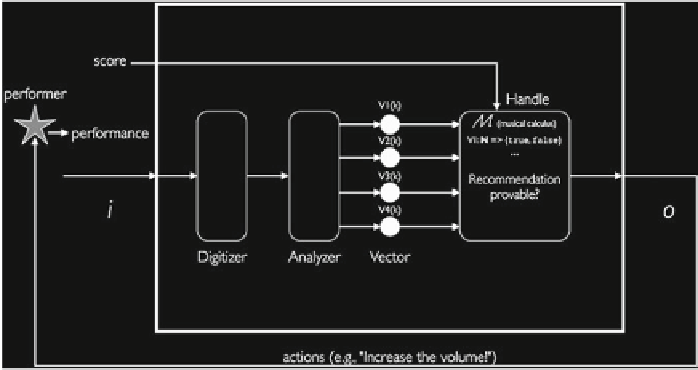Information Technology Reference
In-Depth Information
A
3
∀
a
:
Affect
∃
p
:
Agent
.
feels
(
p
,
a
)
The
translates
predicate is supposed to capture the translation or production of
affects in agents via the semantic properties of music. Upon some reflection, the
reader may suspect that we have swept under this predicate symbol the hard-to-
formally-model processes that operate in the production of affects. We expect that,
when axiomatized, determining whether
translates
(
,
)
holds could be as hard as
general-purpose deductive reasoning. Let the axioms governing
translates
be
m
a
.The
problem of conducting can be now stated as finding an
r
such that:
{
A
1
, A
2
, A
3
,...
}∪
I
(
h
,
t
,
feels
(
listener
,
a
))
⃒
∃
p
:
MusicPhrase
r
:
Recommendation
.
(
B
(
h
,
t
,
performance
(
r
,
score
)
=
p
∧
translates
(
meaning
(
p
),
a
)))
14.4 The Handle Trajectory
Handle was originally a rather humble logico-mathematical component of a music-
creating entity known as CAIRA [for more information on CAIRA and “humble”
Handle, see [
15
] ]. CAIRA is powered in significant part by
human
muscial cre-
ativity, and, as explained above, our goal is a standalone AI that demonstrates
across-the-board muscial creativity
T
. The first step in the engineering devoted to cre-
ating such as AI was reported by by Ellis and Bringsjord; see Fig.
14.4
for the simple,
initial architecture of Handle, conceived as an artificial conductor. As promised, we
now describe three versions of Handle, beginning with the conductor version.
Fig. 14.4
Primitive Handle-as-conductor architecture




Search WWH ::

Custom Search